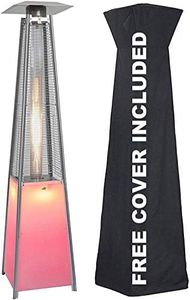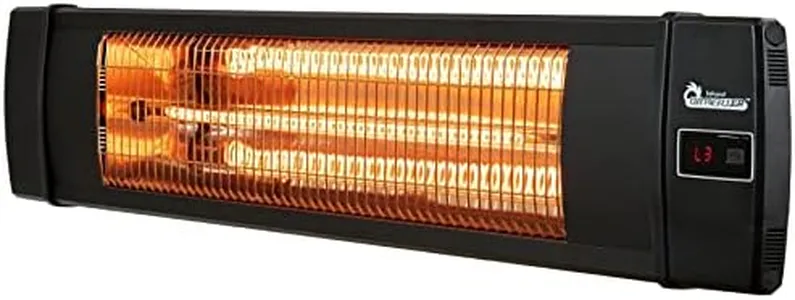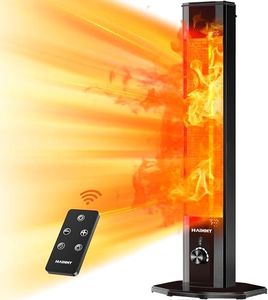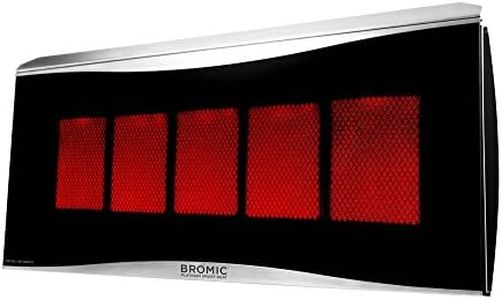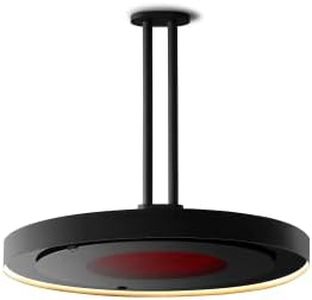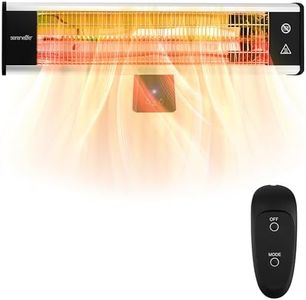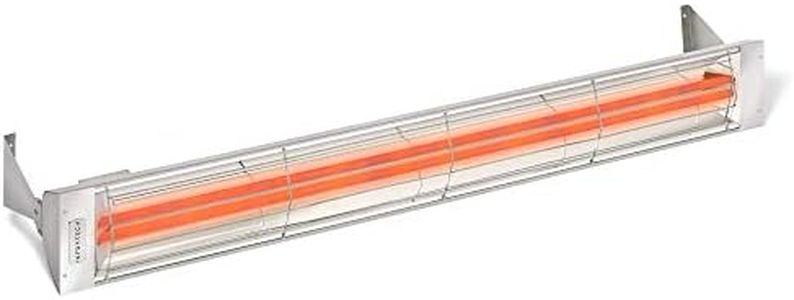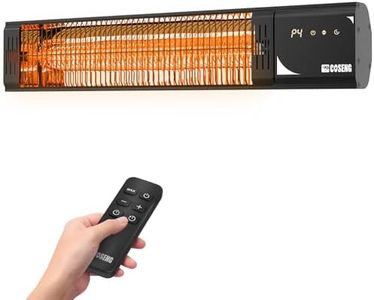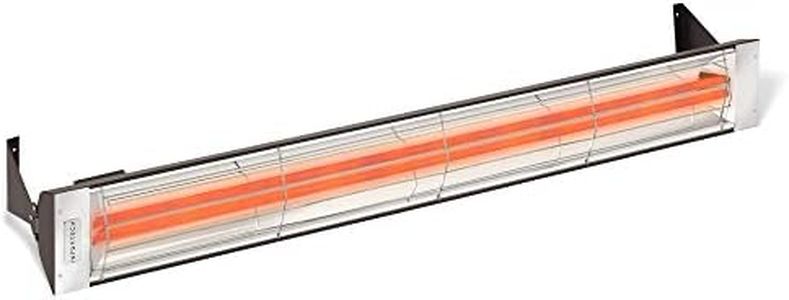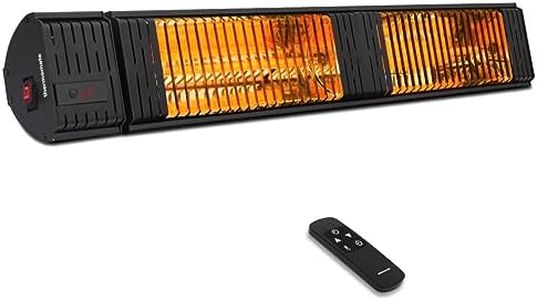10 Best Infrared Patio Heaters 2025 in the United States
Our technology thoroughly searches through the online shopping world, reviewing hundreds of sites. We then process and analyze this information, updating in real-time to bring you the latest top-rated products. This way, you always get the best and most current options available.

Our Top Picks
Winner
Dr Infrared Heater DR-238 Carbon Infrared Outdoor Heater for Restaurant, Patio, Backyard, Garage, and Decks, Standard, Black
Most important from
5305 reviews
The Dr Infrared Heater DR-238 is a versatile infrared heater suitable for both indoor and outdoor spaces, including patios, decks, garages, and even restaurants. It offers three heat settings (900W, 1200W, and 1500W), allowing you to adjust warmth according to your needs. This power range covers moderate outdoor areas well, making it a good choice for typical backyard or patio sizes. Its IP55 rating means it’s weather-resistant, able to handle rain and dust, which is essential for outdoor use. Installation is flexible with included brackets for wall or ceiling mounting, helping you place the heater where it’s most effective without taking up floor space.
The heater uses a carbon infrared lamp combined with a highly reflective aluminum surface to deliver efficient and instant heat without odors, which adds to comfort and energy savings. It's powered by a standard 120V outlet and comes with a remote control for convenience. Design-wise, its slim black cabinet has a modern look that fits well in various settings. On the downside, while the heating area coverage is decent, it may not be enough for very large open spaces or extremely cold conditions. Assembly is required, which might be a minor hassle for some, and its 1-year limited warranty is fairly standard but not extensive.
This heater represents a solid option for homeowners or small businesses seeking a reliable, easy-to-use infrared heater with good energy efficiency and weather protection.
Most important from
5305 reviews
Outdoor Electric Patio Heater, Haimmy 42in Infrared Heater with Remote, 9 Heat Levels, 9H Timers, 1500W Instant Heating, Safety Lock, Tip-Over & Overheat Protection, IPX5 Waterproof Tower Space Heater
Most important from
638 reviews
The Haimmy 42-inch Infrared Patio Heater is a solid choice if you're looking to warm up outdoor or indoor spaces up to about 500 square feet. Its 1500-watt power with carbon fiber heating technology offers quick and direct warmth, which means you won't have to wait long to feel comfortable. You get nine heat settings, ranging from low to high, letting you adjust the temperature just the way you like it. The tower design is sleek and space-saving, suitable for patios, garages, or even indoor areas like basements.
One of the useful features is the 1 to 9-hour timer that helps save energy and adds convenience, especially if you want the heater to turn off automatically. Safety is well covered here: it has a tip-over switch that shuts the unit off if it falls, overheat protection, and a safety lock to keep kids or pets from changing settings accidentally. Plus, its IPX5 waterproof rating means it can handle rain or splashes, making it reliable for outdoor use.
As a floor-standing model, it requires some floor space and isn't designed for wall mounting. While the remote control and multiple heat levels add flexibility, its 12.5-amp draw means it should be plugged into a suitable outlet to avoid electrical issues. The design is functional but not flashy, so if you’re looking for a heater that doubles as a statement piece, this might not meet that need. The Haimmy heater is a great option for anyone wanting an efficient, safe, and easy-to-use patio heater with good weather resistance. It works well for medium to large outdoor areas and offers enough controls to customize your comfort without complicated features.
Most important from
638 reviews
Bromic Heating Smart Heat Tungsten Electric 6000W Radiant Infrared Electric Patio Heater Model BH0420033
Most important from
143 reviews
The Bromic Heating Smart Heat Tungsten Electric 6000W Infrared Patio Heater is a robust option for anyone looking to enhance their outdoor spaces with efficient heating. One of its major strengths is the high power output of 6000 watts, which provides warmth over an area of up to 144 square feet. This makes it suitable for both residential patios and commercial settings. The heater offers flexible mounting options, allowing it to be installed on walls or ceilings, thus providing versatility in placement to suit various layouts.
Its construction is durable, designed to resist both corrosion and high temperatures, ensuring longevity even with frequent use. The design includes frosted tubes that emit a soft glow, adding a stylish and modern touch to your environment. This unit is also smart control ready, meaning it can integrate with switches, dimmers, or smart systems, although these are sold separately.
However, it is important to keep in mind that while the Bromic heater is energy efficient and provides good heating, its high wattage means it may consume a significant amount of electricity. Additionally, it is relatively heavy at 22 pounds, which might make installation a bit cumbersome if you’re doing it alone. Lastly, while it is built for outdoor use, it would be prudent to ensure it is placed in a covered area to protect it from extreme weather conditions for extended durability. For those prioritizing both aesthetics and functionality, this heater is a solid choice, especially for larger spaces needing consistent and stylish warmth.
Most important from
143 reviews
Buying Guide for the Best Infrared Patio Heaters
Choosing the right infrared patio heater can significantly enhance your outdoor experience, especially during cooler months. Infrared patio heaters work by emitting infrared radiation, which directly warms up objects and people rather than the air. This makes them highly efficient and effective for outdoor heating. To pick the best infrared patio heater for your needs, you should consider several key specifications. Understanding these specs will help you make an informed decision that ensures comfort, efficiency, and safety.FAQ
Most Popular Categories Right Now
